SEATTLE––British artist Claire Partington‘s (b.1973) long-running exhibition Taking Tea at the Seattle Art Museum, which opened Dec 7, 2018 and runs for two years, is the artist’s first in the United States as well as her first large commission.
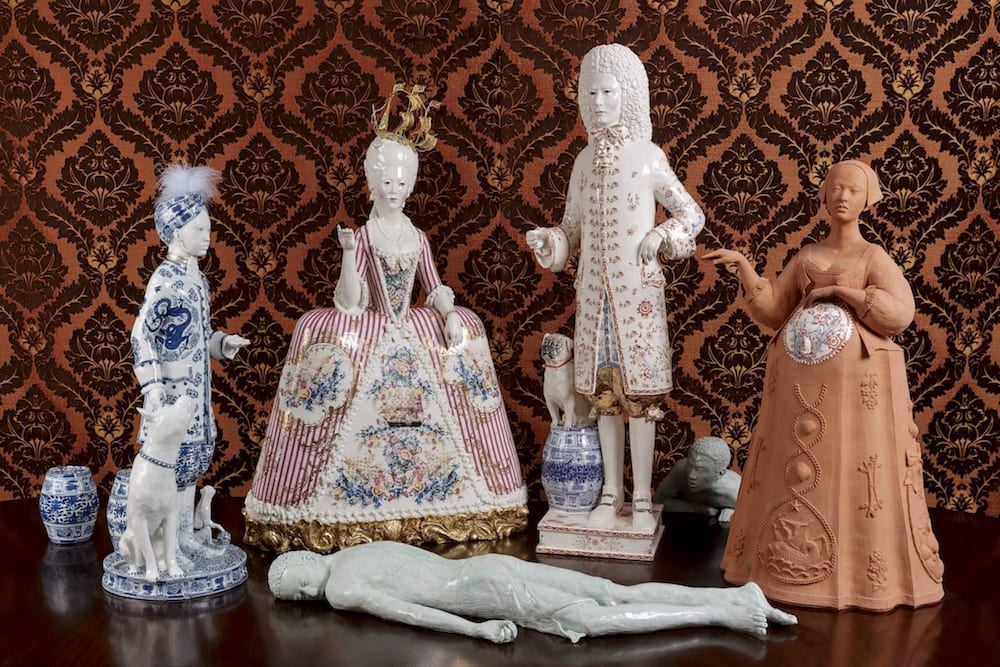
Taking Tea
The site-specific installation, which features six porcelain and stoneware figures atop a round, gilded table, is a response to the museum’s Porcelain Room.
The Porcelain Room is a SAM favorite for visitors with more than 1,000 European and Asian porcelain pieces from SAM’s collection grouped to evoke porcelain as a treasured commodity between the East and the West.
Adding context to the museum’s milieu, Partington’s works trace the historical narratives of porcelain objects: the West’s fascination with Chinese porcelain and tea, and even more so the exoticism and status the objects once conveyed to the point of fetishization.
The figures––three members of an aristocratic family, their maid and two sailors––conjure imagery of opulent luxury, the international tea, silk and porcelain trade, but also expose the degrading aspects of global trade: human exploitation, colonialism and appropriation.
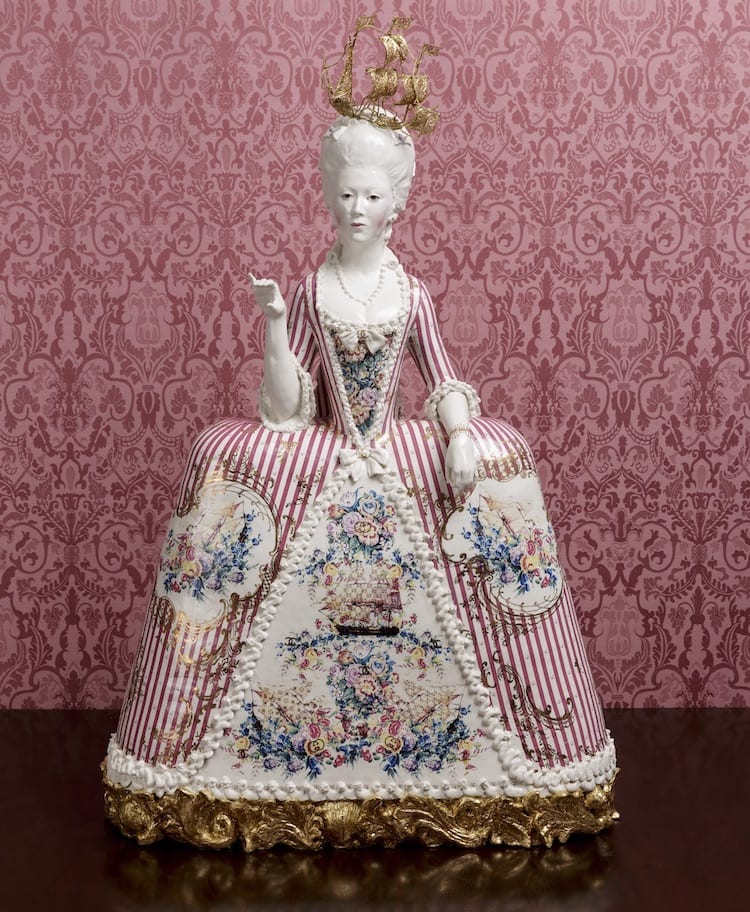
Woman of the House
The artist aptly underscores this reality with her porcelain female figure The Woman of the House. Complete with an elaborate clipper ship coiffure, the female figure is an homage to luxury with her artificially tiny waist and ornamental dress emblazoned with delicate painted flowers and Louis Viutton and Gucci sails “sewn” into the porcelain fabric with cake piping “lace” detail.
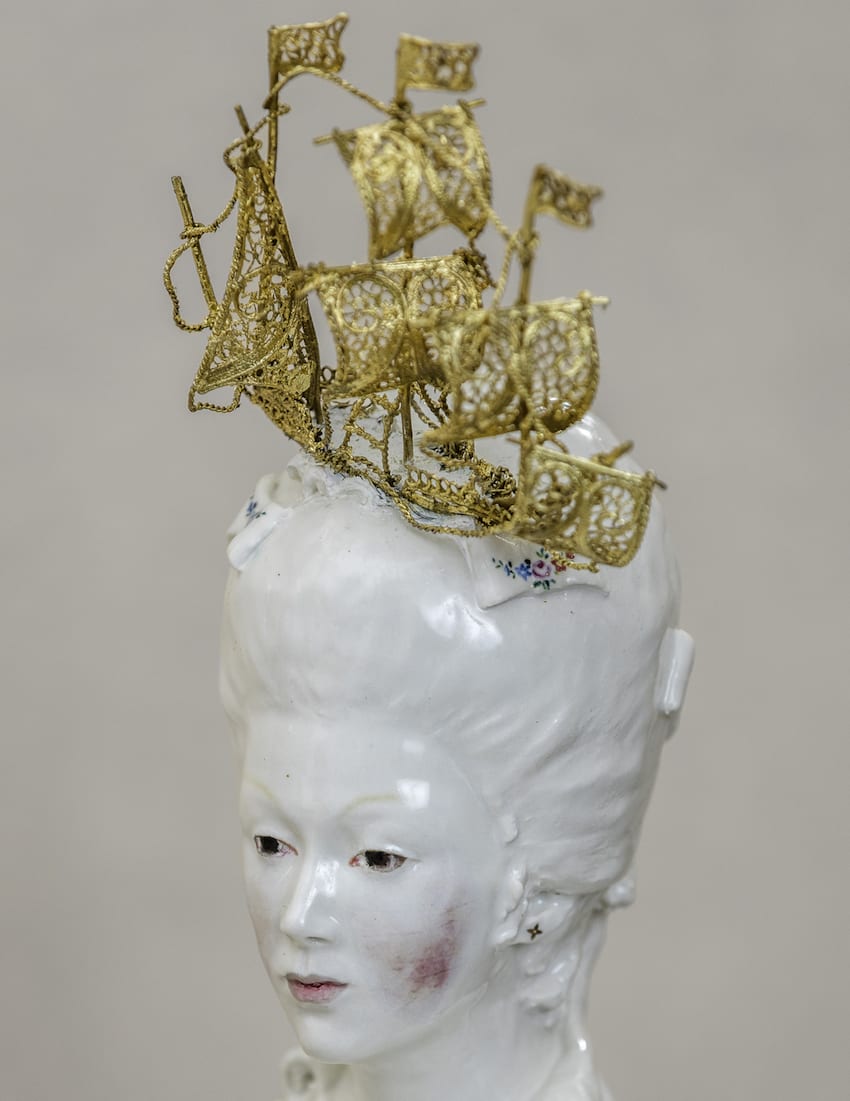
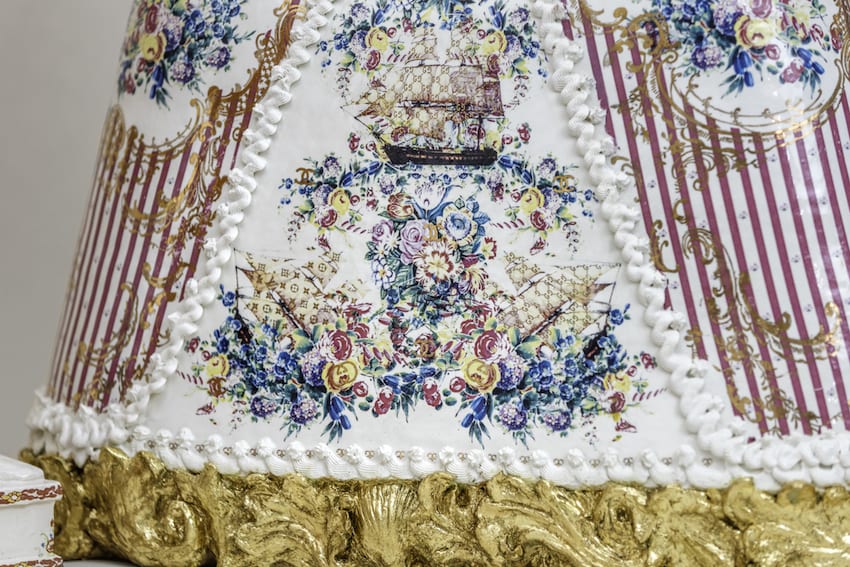

Man of the House, Woman of the House and one of Two Sailors
Similarly, each figure draws from this reality. Rendered in a specific ceramic approach, each evokes a different aspect of the European obsession, Art and Object writes.
The Man of the House mimics the English Bow porcelain style, a 17th-century factory known for imitating Chinese and Japanese porcelain with notoriously uneven quality. A well-dressed gentleman in gold breeches and an imposing wig, he still lacks detail and is eclipsed in quality by his wife.
The Boy mimics the style of Chinese Wan Li porcelain. His exotic ensemble and fine blue and white color scheme mark him as a true treasure, a servant culturally appropriated by this European couple.
The Maid resembles a small red stoneware teapot, the first Chinese ceramic to be imported to 17th century Europe, highlighting her utilitarian role.
The celadon-glazed Two Sailors are obviously shipwrecked. Ignored by the tea party group, one lies as if washed up on a beach, corpse-like, while the other desperately clings to the tabletop. One of the sailor’s backs is incised with the shipwreck excerpt from Lord Byron’s Don Juan.
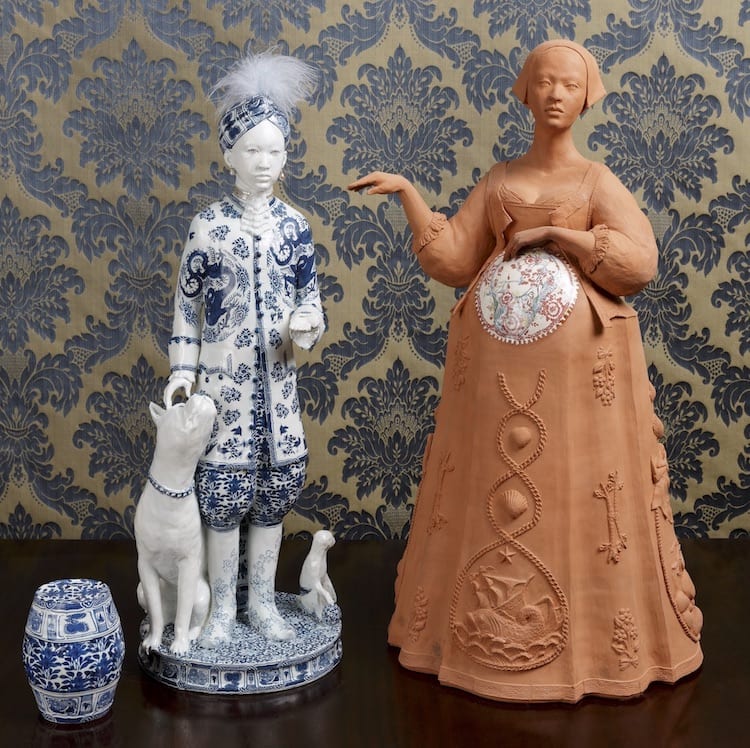
The Boy and The Maid
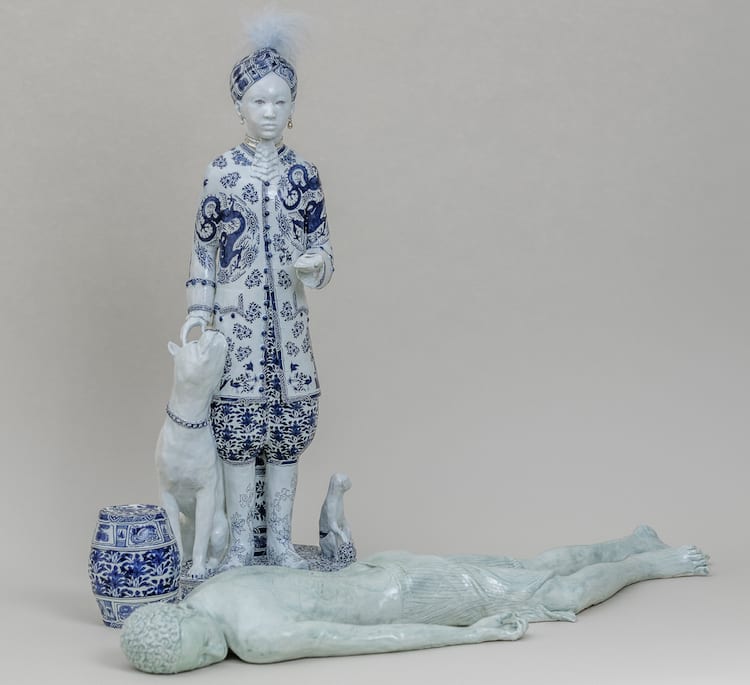
The Boy and one of Two Sailors
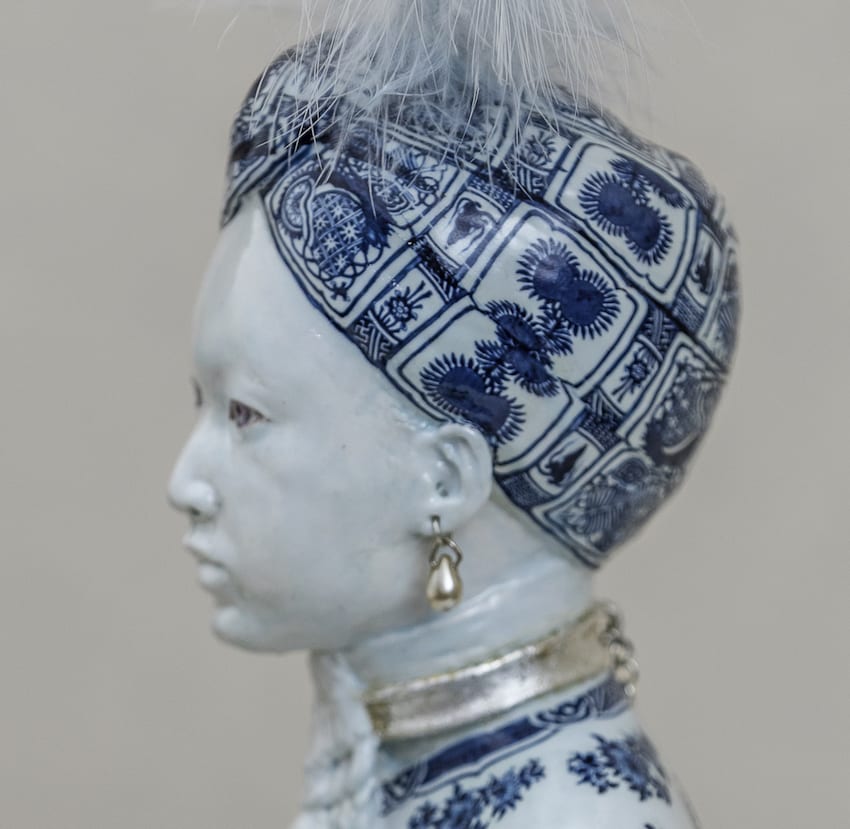
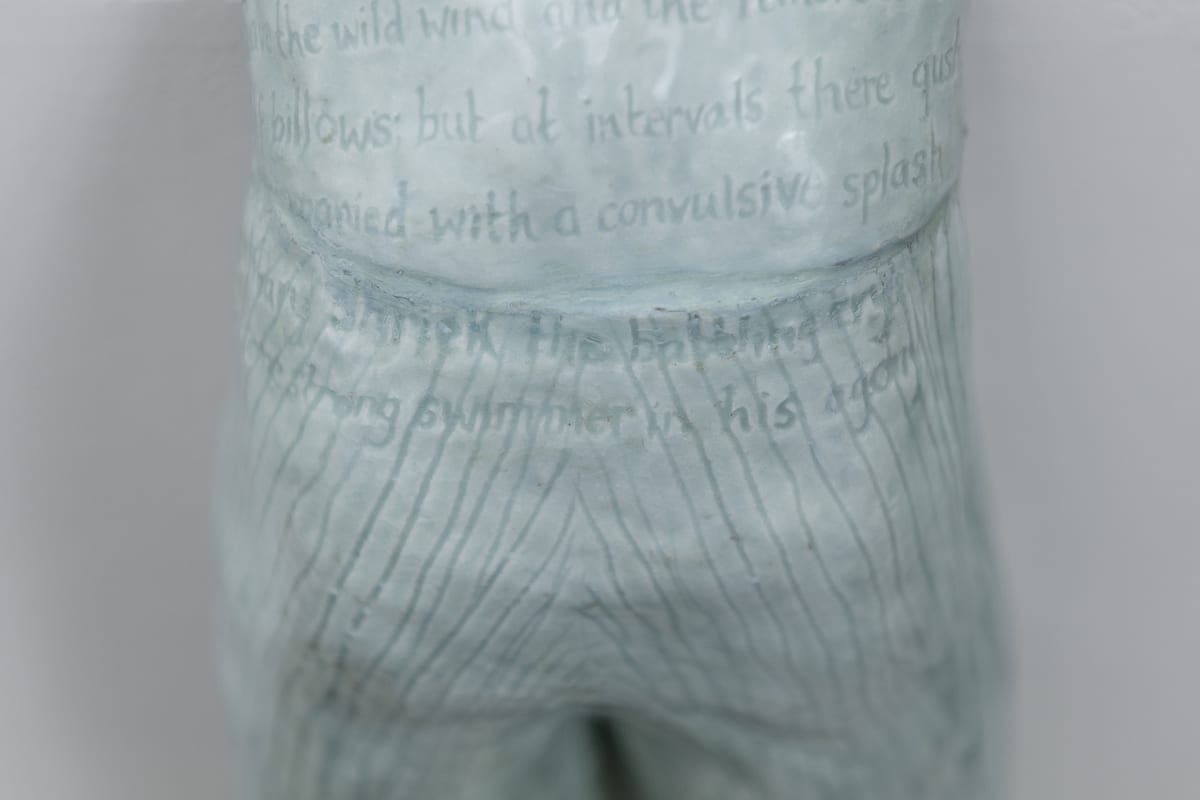
Rounding out this reexamination of porcelain and tea’s multifaceted history is, as Art and Object writes, a wall mounting of porcelain fragments and shipwreck artifacts from the 17th- and 18th-century exposing the tragic realities of ocean travel.
Some are still covered in barnacles, reminding viewers that sea voyages were often perilous, and that people lost their lives to bring costly porcelain to the rich.
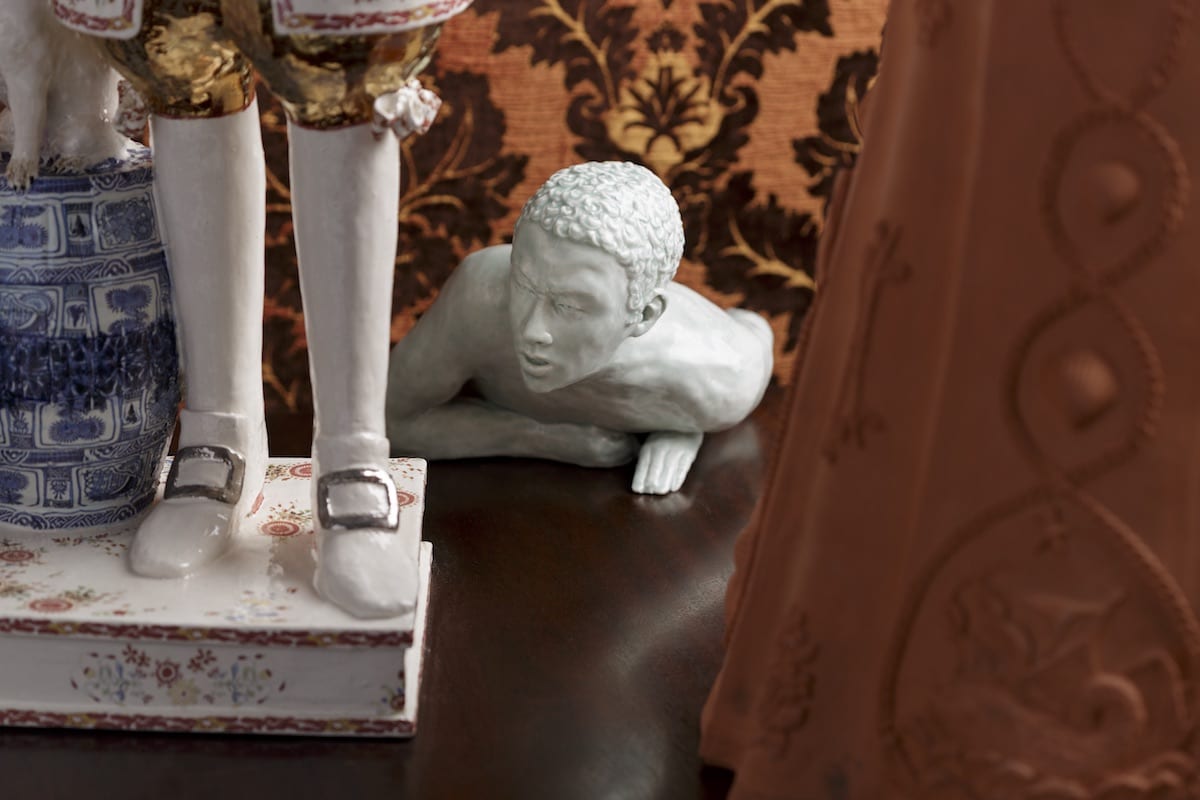
One of Two Sailors
Photos by Dan Weill.
Love or loathe this exhibition from the world of contemporary ceramic art and contemporary ceramics? Share your thoughts in the comments section below.
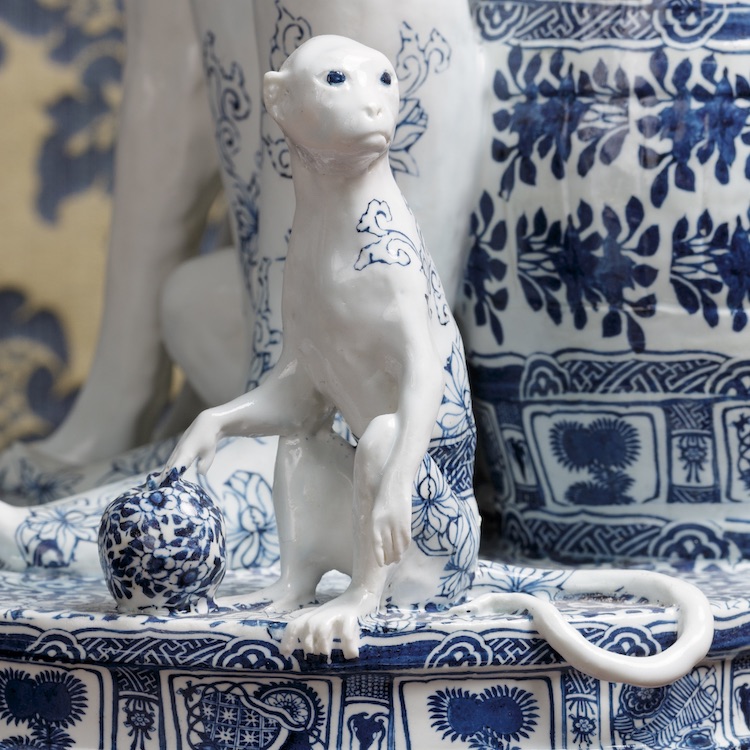
I hope that someday I my lifetime this might come to Australia. It seems breathtakingly lovely and full of satisfying references to keep my imagination busy for a long time.
Stunning and amazing technical and conceptual rigor!!!!
I agree with Doug. I admire both the research involved and the quality of execution. The detail is extraordinarily beautiful. Is there any chance of this exhibition coming to England?